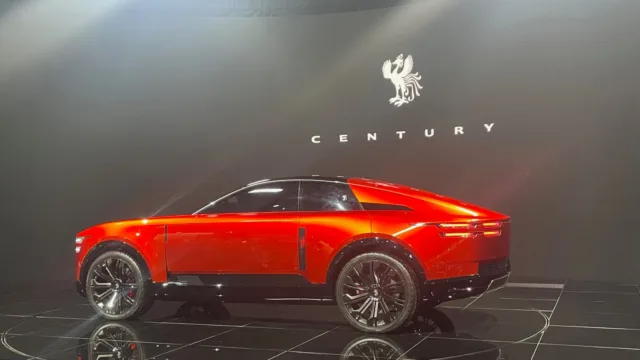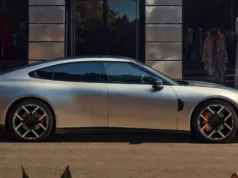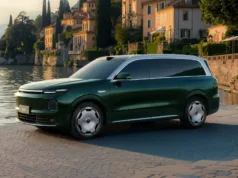
Japan’s storied carmakers — known for their reliable and efficient vehicle models — are pooling in resources and combining efforts as they struggle to regain ground lost to flashy EV offerings churned out by upstarts from China.
There are at least three ways in which Japanese manufacturers are trying to make up for lost time and adapting to rapidly evolving tech: Japan’s biggest automakers have pledged cooperation in new tech-related areas to catch up with the rapidly evolving global EV industry, a number of the country’s top automakers are cutting vehicle testing times using simulation to ensure faster vehicle development and early-to-market strategies without quality taking a hit, and they’re splurging funds into new EV technology areas such as solid state batteries.
At this year’s Japan Mobility Show, there is another steady refrain that’s repeatedly echoed by the top leaders of Japan’s auto industry — from Toyota chief Akio Toyoda to Suzuki Motors’ boss Toshihiro Suzuki — that the road to carbon neutrality for the automotive sector entails “multiple technology pathways”. And, that battery electric vehicles are not the only solution. Record hybrid vehicle sales across global markets since early this year seems to be vindicating what Toyoda and Suzuki are pointing to: that battery electric vehicles or BEV alone are not the only future.
Successor to the 70-year-old Tokyo Motor Show, the Japan Mobility Show is a co-creation platform that brings together companies across Japan’s automotive and ancillary sectors and is organised by the Japan Automobile Manufacturers Association – the country’s top vehicle grouping. JAMA has uncharacteristically admitted in its road map for 2035 that Japan’s car industry, once a global leader, is struggling to adapt to new technology and that geopolitical instability has weakened its competitive advantage.
JAMA is fronting the call to action for pledged cooperation by Japan’s biggest automakers in tech-focused areas to survive in the rapidly evolving global industry. Over the next decade, Japanese manufacturers will need to pool resources and collaborate in areas like artificial intelligence and electric vehicles to catch up with the technologically sophisticated cars available in other markets, the JAMA said in its road map for 2035.
Japanese carmaker have taken cue. Toyota already has partnerships with Suzuki, Mazda and Subaru, while Honda’s deal to merge with a flailing Nissan fell through at the last minute. There are murmurs of other tie-ups too.
Cutting vehicle development time
One way to get in early is to develop cutting-edge simulation. Companies such as Honda Motor have introduced a new virtual reality simulator at one of its development centers that allows engineers to check the driving experience of a new car without needing to get on the road, effectively cutting down testing times by around 50 per cent. Traditional car makers in Japan and markets such as the US take about 45 months to get a new car on the road.
Story continues below this ad
For Chinese EV makers, that number is down to less than 20 months. Japan’s carmakers are trying to bring it down to under 18 months, without compromising on quality. Chinese automakers, and even Tesla, face production glitches in the pursuit of lowering the lead times.
Reducing the time period for developing a new car is becoming an important point and other Japanese carmakers, too, are working on that strategy. Japanese parts suppliers, a big ancillary industry, are shifting focus from internal combustion engine or ICE cars to working overtime on developing EV parts, including motors and batteries.
Then there is software, an area where Japan is seen as lagging. Automakers such as Suzuki are pivoting towards developing what are called Software Defined Vehicles, or cars are controlled essentially by software that allows functions and features to be updated through software, without any hardware changes. Those are par for the course in markets such as China, when EV penetration is high. In Japan, though, this is still something new, and the learning curve is steep. A senior Toyota executive told The Indian Express that in Japan’s automotive industry’s SDV push, countries such as India could play a part.
Partnership between Japanese and Chinese auto companies
Are Japanese companies open to partnering with Chinese tech companies such as Huawei and Tencent? That is still an issue. But there is a sense that Japanese automakers have a shot at leading the global software defined vehicle race. And in that, the India exposure could be important, the Toyota executive said.
Story continues below this ad
Then there’s cutting edge tech, including solid state batteries. Toyota Motor Corp, a late entrant into the battery electric vehicle race, is aiming to roll out next-generation solid-state batteries over the next two years, marking a milestone in the global race to commercialise this breakthrough technology that promises to double vehicle range and drastically lower charging time.
In the due course, the top Japanese carmaker could potentially have two sets of battery electric vehicles or BEV on offer across markets, including India – one range with existing Lithium-ion batteries and a second range with its new and pricier solid state batteries, a senior company executive at Toyota’s joint venture in India indicated.
Toyota, the world’s largest carmaker by vehicles sold, had announced a “breakthrough” in solid state battery materials in 2024 and had said it plans to mass-produce solid-state batteries by 2027 or 2028. Solid-state batteries are seen as a major improvement in battery tech, countering concerns such as extended charging time and the risk of catching fire associated with traditional Li-ion batteries that have a liquid electrolyte.
With its new solid-state batteries, Toyota expects its electric cars powered by them to have a range of 1,200km — well over twice that of the current range of EVs — and a charging time of 10 minutes or less, far lower than that two-four hours that it takes to fast charge an EV with Li-ion batteries.
Story continues below this ad
Other companies, too, are making progress on alternatives to Li-ion batteries. Chinese battery maker CATL revealed in early-2024 it was preparing to mass-produce its semi-solid batteries, while South Korea’s Samsung SDI has completed a fully automated pilot line for solid-state batteries. Germany’s Volkswagen, whose investment in American startup QuantumScape has been dogged by delays, was reported by Reuters as having held talks with France’s Blue Solutions, which already produces solid-state batteries for Daimler electric buses.
An advantage of solid-state batteries is that the electrolyte is solid. This allows ions, which convey electricity, to move faster, thus enabling shorter charging times, increased cruising ranges, and produce higher power output. Solid-state batteries are also characterised by being highly stable because they are resistant to changes in temperature and can robustly endure high temperatures and high voltages.
A longstanding technical issue in solid state battery development has been that repeatedly charging and discharging the battery causes cracks between the cathodes and anodes and the solid electrolytes, degrading battery performance. But producing solid-state batteries in large volumes is costly and difficult. Problems include the extreme sensitivity of the batteries to moisture and oxygen, as well as the mechanical pressure needed to hold them together to prevent the formation of dendrites, the metal filaments that can cause short circuits.
(The author was in Tokyo on the invitation of Maruti Suzuki India)









